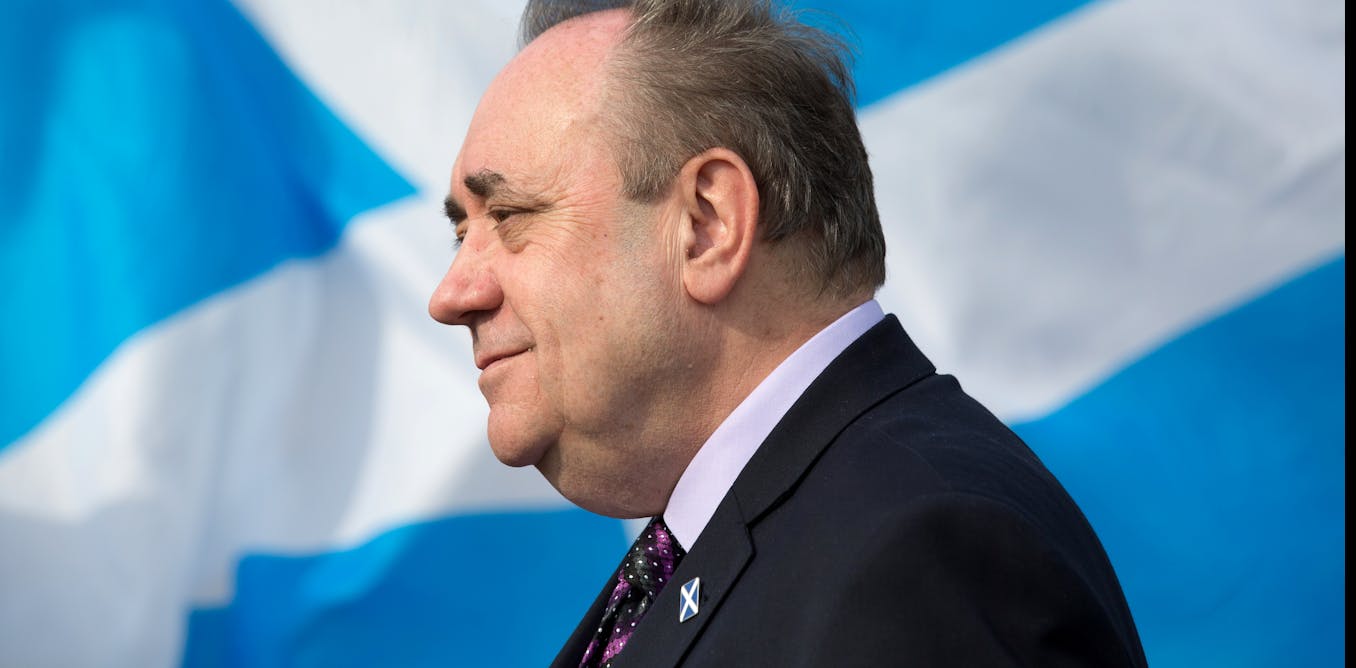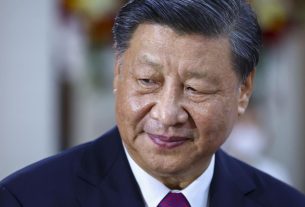Alex Salmond, possibly one of the most famous Scottish politicians of recent decades, and certainly the best-known face of the Scottish National Party (SNP), has died at the age of 69.
The former first minister of Scotland, a long-standing member of the Westminster parliament and a member of the Scottish parliament, he led the SNP from a small, fringe party within Westminster to become the ruling party of the Scottish government. He was the first Scottish nationalist first minister of Scotland, a post he would hold from 2007 to 2014.
Salmond was born, raised and educated in Scotland. It was while he was a student at St Andrews University that he joined the university branch of the Federation of Student Nationalists in December 1973. As one of only two fully paid-up members of the SNP at the university, he became the branch president.
After graduation, and a couple of years as a civil servant, Salmond moved to the Royal Bank of Scotland and became an economics expert, with a focus on oil. Yet, throughout this career he remained an active and committed member of the SNP.
Leftwing in his views, he was part of the 79 Group, a small faction of the SNP that was very critical of the then leadership, and which advocated a more leftwing stance for the party as a whole. He, along with others, was briefly expelled from the SNP in 1982, but was allowed back in a month later.
By 1985, Salmon was a senior figure in the SNP. His political career truly began in 1987, when he defeated the incumbent Conservative in Banff and Buchan in 1987 to become the consituency’s Westminster MP. He would win re-election four times, and then be elected to Holyrood, all from the north-east of Scotland, for the next three decades.
SNP leadership and independence referendum
Salmond first became leader of the SNP in 1990, and he showed his significant skills as a political strategist on the UK-wide stage. From here, he would become a very visible and recognisable face for the SNP, and for Scotland.
It would be the advent of devolution in 1997, and the creation of the Scottish parliament in 1999 that would change the face of Scottish politics and allow Salmond to reach new heights. But there were many bumps along the way. Just a year into the life of the brand new parliament, Salmond suddenly stood down as SNP leader. There were rumours of fallouts with other leading figures.
Salmond would, however, return as leader in 2004, replacing John Swinney (currently the first minister) after a poor showing for the SNP in Scottish parliament elections. As he was an MP and not an MSP at the time, the party at Holyrood was led by Nicola Sturgeon, at the time a longtime ally.
Not only did he return as an MSP, but the SNP became the largest party in the Scottish parliament by one seat in 2007. It formed a minority government with Salmond as first minister and Sturgeon as his deputy.
Alamy/PA
Another milestone was reached in 2011, when Salmond would lead the SNP in winning a majority within the Scottish parliament, a task everyone thought impossible given the voting system was, arguably, specifically designed to avoid such outcomes. This win led Salmond to begin negotiations with the UK government of David Cameron to hold a referendum on Scottish independence.
In perhaps one of Salmond’s most effective moments, he came away with an agreement that allowed him many of his specific objectives – a single question on the ballot and a long lead in, of two years, before the referendum itself. Only ten years after he had returned as leader, he led the SNP to a referendum outcome where 45% of voters said yes to independence, a much larger figure than many thought possible.
However, this was still a loss, and Salmond resigned as party leader the next day. He then returned to Westminster in 2015 but lost his seat in 2017.
Further problems arose for Salmond in 2018, when allegations of sexual assault were made, and he resigned from the SNP after being a member for 45 years. Despite being cleared at a trial in 2020 of 14 charges, his relationship with the SNP, and his personal relationships with Sturgeon and other leading SNP figures, were badly damaged.
He directly blamed Sturgeon and her husband, SNP chief executive Peter Murrell, for the way in which he was treated. He took the Scottish government to court over the handling of the accusations and won a substantial payout of half a million pounds.
Establishing a new party
Whether it was because of his treatment by the SNP, his disquiet at what he saw as the wrong priorities, or the inability for him to find a role after leaving as first minister, Salmond decided to establish a new political party, Alba, in 2021, only three years after leaving the SNP.
After being on the national, and international, stage for several decades, Salmond remained committed to the political fight for Scottish independence. There were several defections from the SNP – two MPs, one MSP, and a few local councillors – but the party has never won an elected seat at any level.
Salmond also presented a television show on Russian state broadcaster RT, a decision unpopular with many in the SNP. He also wrote as a tipster on horse racing for newspapers for many years.

EPA
There can be little doubt that Salmond’s professional and personal lives were characterised by ups and downs. Yet the fact remains that he led the SNP to many victories, and saw them challenge the status quo and the British state in a manner unthinkable when he first became an SNP MP.
Those present during the last few days of the 2014 referendum will remember the distinct feeling that maybe, just maybe, the SNP could pull off a win, and an independent Scotland – a dream he shared with millions of others – could be a possibility.
Salmond reshaped the SNP, he reshaped the political landscape of Scotland, and his legacy cannot be overstated.



